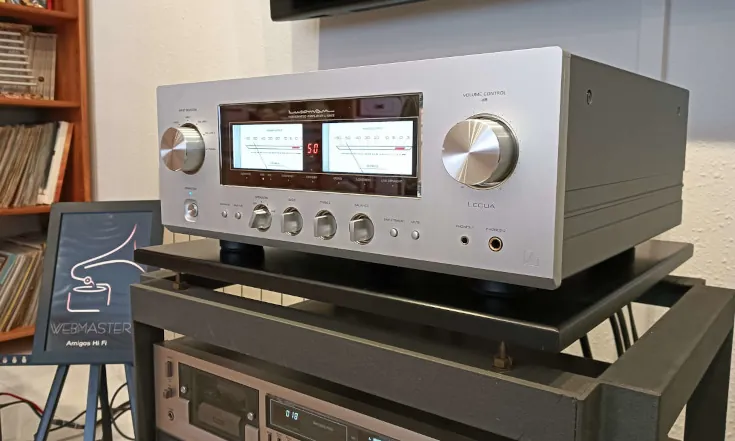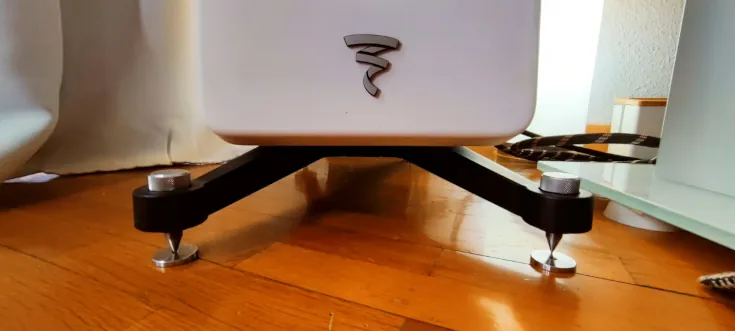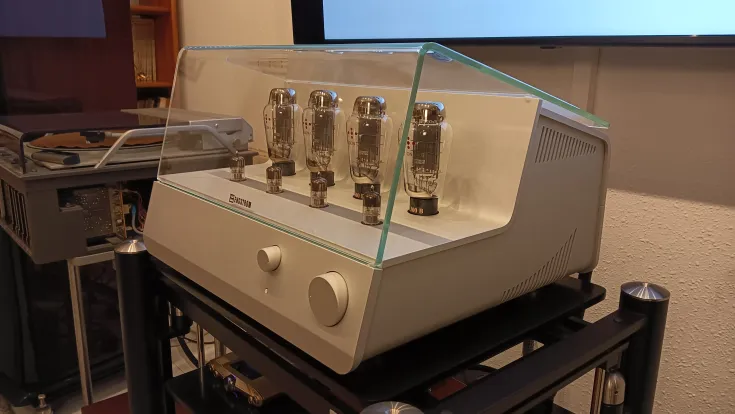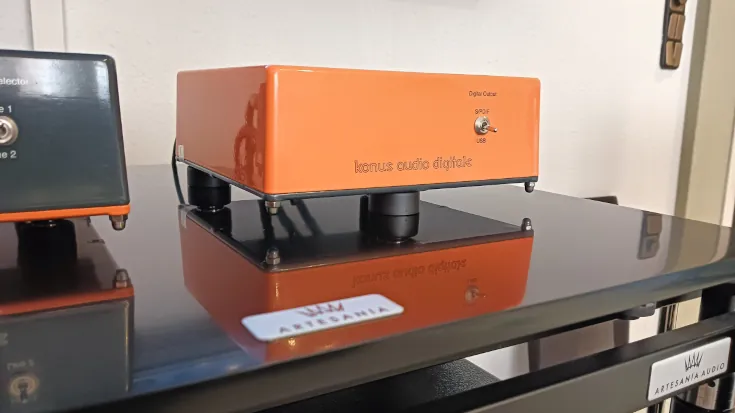Perfect Stranger

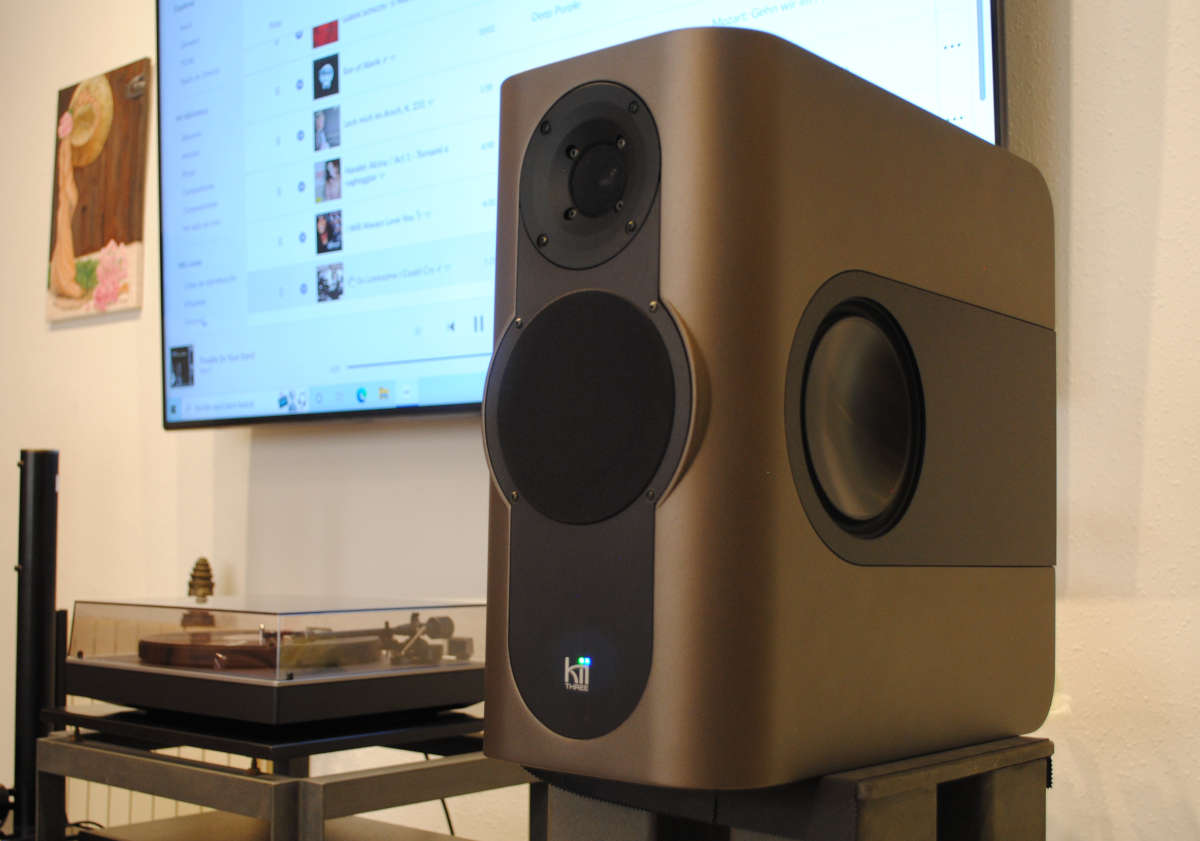
Kii Audio, the company
A German company located in the lower Rhine, in the city of Hamminkeln, it was founded in 2014. With facilities covering 1300 square meters, intended for the production of its two product lines, the domestic HiFi market and the professional studio market. With sales balanced between the two markets and currently serving 45 countries with its product catalog.

Among its founders are two former Grimm Audio employees, Bruno Putzeys (Head of the Engineering Team) and Chris Reichardt (Managing Director). I am going to focus a little on Bruno's biography. Bruno graduated Cum Laude from the National Technical School for Radio and Film (Belgium), specializing in power stages for switched audio amplifiers. He worked for 10 years at the Philips Applied Technologies Laboratory in Leuven (Belgium), where he developed several class D amplifiers with digital and analog control, noise formers and modulation methods, and designed, among others, the "UcD" class D circuit. In 2005 he left Philips to divide his time between Grimm Audio and Hypex.

His current activities include the design of high-performance discrete AD/DA converters and analog signal processing circuits, DSP algorithms, class D power amplifiers and switching power supplies. He holds several patents in the fields of digital audio and power conversion and has published extensively in these and other related fields. In 2010 he designed the high-end Grimm Audio LS1 loudspeaker, which was immediately recognized by several critics as the best hi-fi speaker to date. I think it is clear that we are talking about a person with first-rate authority on the subject.
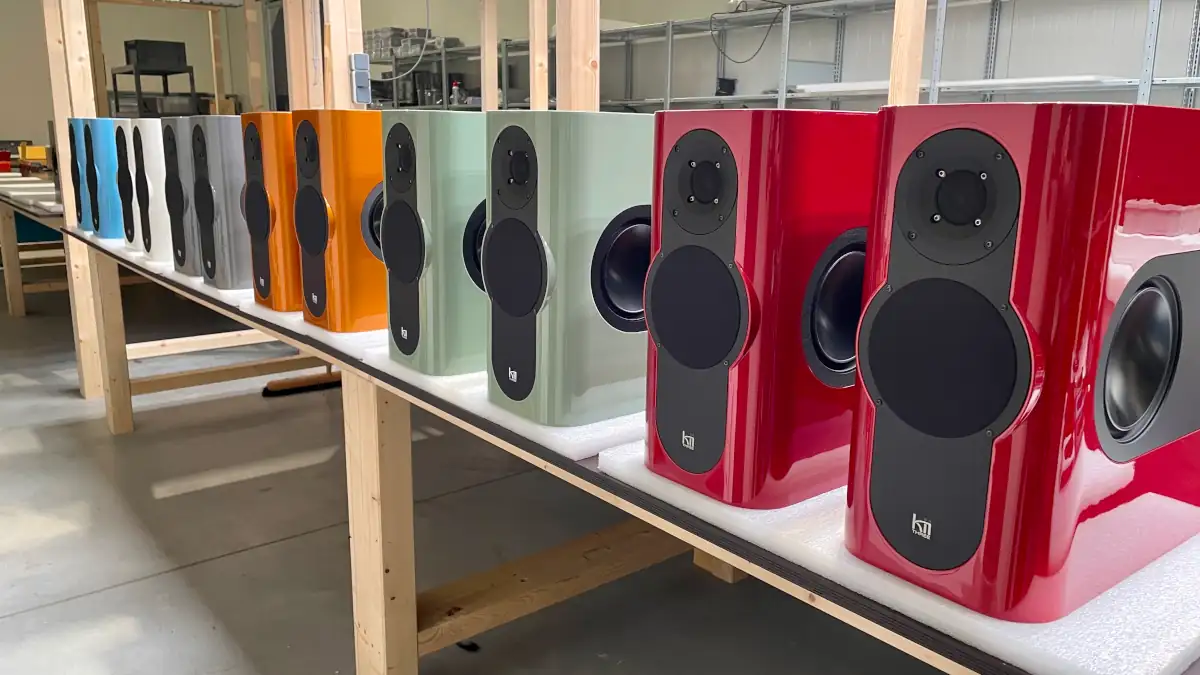
Kii Audio Three
I need time. Much more time
I had had these speakers for a week and it was clear to me that I was dealing with something different, very powerful, and that it would take the best of me to try to understand and assimilate the possibilities they offer.
Kii Audio Three are active monitors that, between them, have 12 transducers and ... 12 amplifiers, class D, HypeX Ncore with a power of 250 W each. According to the manufacturer's technical specifications, 93% of the energy used is converted into sound, therefore, we are talking about a first-rate sound presence in the room, with a variable electrical consumption, but which can be significant depending on the degree of demand we place on the system. The average consumption is estimated at 90 W, but with peaks that can reach 3000 W. If we add the BXT bass modules we can reach peaks of 7000 W. Now I'll tell you about them.
The BXT modules are bass extension speakers, and together with the Three, placed on top, they make up the complete system of the range. Although I was offered the possibility of having them, the 53 kilos per unit plus the protective packaging made me give up the idea immediately.

This system can be easily managed with a control console that also acts as an amplifier preamp, called Kii Control. To manage the different functions, there are buttons to select the source and others to manage the configuration, which can be done via the small display. Finally, a large and easy-to-use potentiometer gives it its functional and aesthetic touch. In addition, this control console adds digital inputs to the system. In my case, this has been the entry point and not those located in the speakers.
Individually, each speaker contains 4 x 6.5-inch woofers, 1 x 5-inch midwoofer and 1 x 1-inch guided wave tweeter. 1 DSP monitor controller. 6 x 250 W HipeX NCore modules, customized to service each of the transducers. An Active Wave Focusing crossover.
And for the future owners of this audio system, Kii Audio uses CAT6 cables with RJ45 terminations for its management and control (interconnection of speakers and with control console), that is, identical to those used in home routers. I have no idea what can happen if you connect the speakers with the cables to the router but in the manual, they repeatedly and insistently tell you NOT TO DO IT. You have been warned, folks.

To install it in my living room, I had to catch my breath several times, as it doesn't follow what we could call a usual pattern at all and you have to "understand" its logic. Once you've done it, everything makes sense, but the first time it doesn't make you feel confident about any of the steps you take.
Equipment used
» Roon Core
» LG 75-inch Dolby Atmos screen
From this point on, you are only going to read praise and more praise of the product, so now I will talk about the complex part of it. The main visible difference between domestic and professional sound is in the cables. The main purpose of these speakers is the professional world of recording studios, which is why they have an AES/EBU as their only direct sound input that can be switched to either digital or analog in each of the speakers. In PRO sound this connection IS the connection, but in domestic HiFi it is the RCA, which means we already have the first problem. I know of very few XLR preamplifier outputs in high-end equipment and none at all in medium or low-end equipment. That said, once this problem is taken into account, what comes next is a dream come true, not with the fallacy that footballers say it is, but for real.
First listening
My first listenings usually last between a day or two. After the first moment I start working with the component to try to get the best out of it in my room. Well, I've been wasting my time miserably for ten days without doing anything. The impact of the sound and its materialization in the room was such that I literally couldn't do anything, just listen and smile. Smiling and listening .
The sound they emit fills the room, continues to flood my house and can be clearly heard even inside a cupboard. The ability to fill all available space, creating a musical atmosphere in line with the chosen track is magical. How many times have you read about me that a speaker has this or that characteristic in a marked way, so if you are looking for that sound, you can get it. The lack of this clear, identifiable identity drove me crazy.
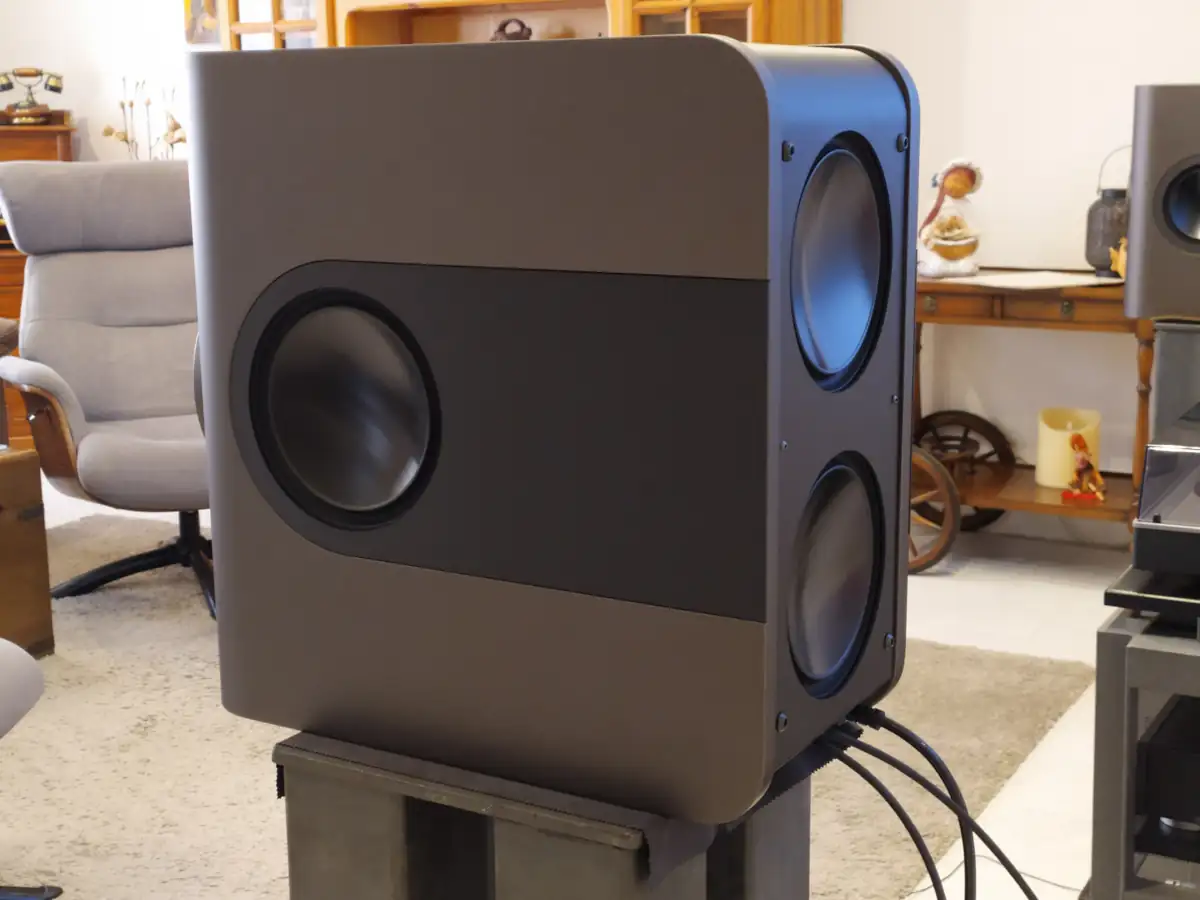
How was it possible to go from a Nirvana concert to the Allegretto from Beethoven's Seventh Symphony without dying in the attempt? How was it possible that Patricia Petibon could leave me lying on the sofa, exhausted, after her Italian baroque arias and then, Pink Floyd with The Animals? It took me ten days to recover from so many emotions, to lower my pulse rate and activate my more analytical side.
My original mistake had been to treat a professional product as domestic HiFi. Kii Audio Three are top-level monitors for working in the studio, both recording and mastering, where you never know the next day which musician will come in or what kind of music they play, therefore the versatility of this product is not optional, it is necessary and obligatory.
I have "worked" so many hours on this system that I am sure I know what exact response I would get from the bass extenders, which form the final part of the system, the BXT modules.
@amigoshifi Kii Audio Three, orbital view of the monitor, for the Amigos HiFi article
♬ original sound - amigoshifi
Sound environment
It is responsible for making you believe that what you are hearing is real and not just a simple recording of the main protagonists. When you hear an electric guitar, its notes, your body reacts, but when you are able to hear the bounces that the guitar notes produce in the room, generating an "atmosphere" and context to the sound, you go crazy. There is a bad practice of generating noise in the signal to give body, it is a disaster in recording. Other speakers generate an excess of bass to give extra presence to the sound, thereby managing to dirty the signal, making it confusing and tiring. Kii Audio Three is clean and clear as spring water, without any coloration. This is strictly necessary, because if they need that "warmth" they will add it during recording, not during playback, because that would lead to errors.
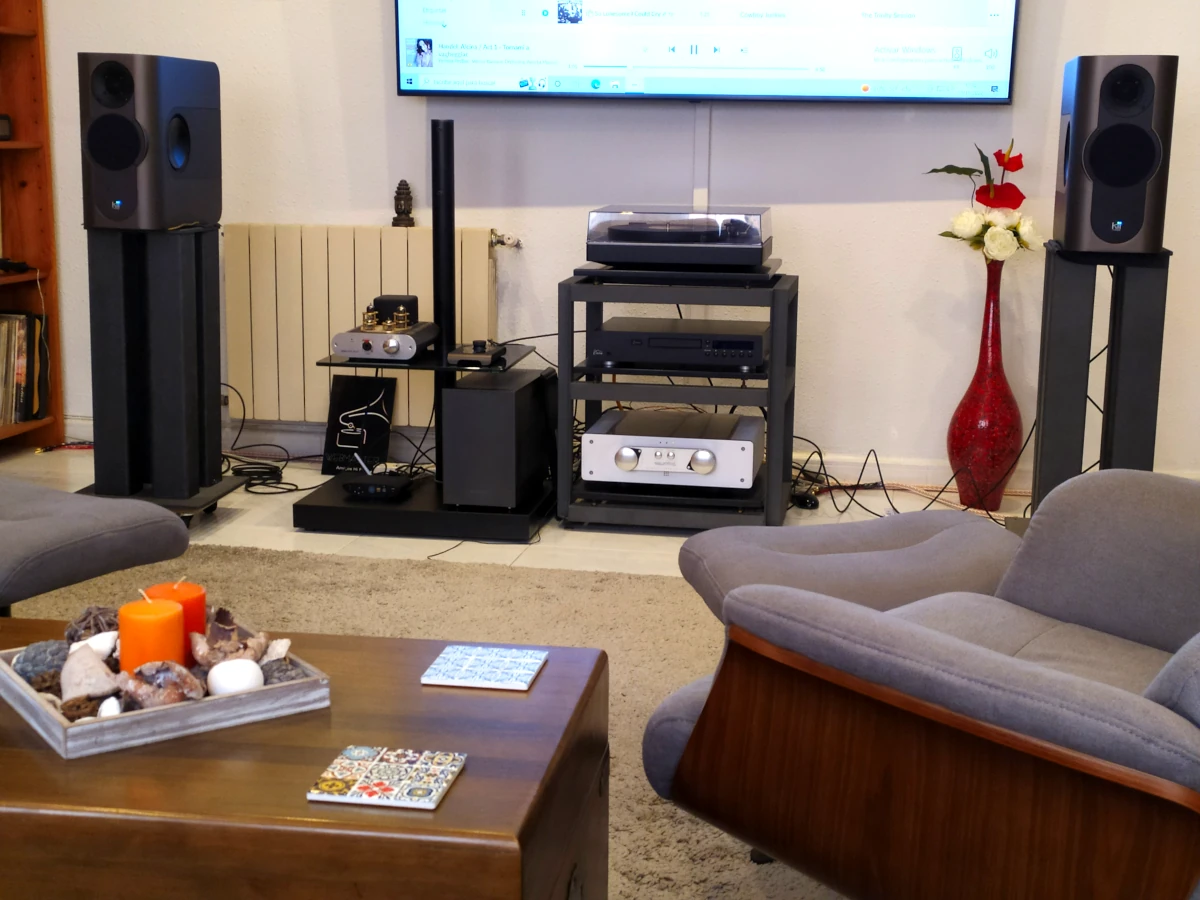
First conclusions
The joy and the memories that this system has left me at home are spectacular. The clarity I have enjoyed both musically and as Home Theater has been top notch in its price category. As Home Theater, and being a stereo system, the clarity of the dialogues made you think you necessarily had a center channel speaker. Only in the most thunderous scenes of the last installment of The Lord of the Rings did you feel the need for more bass, which is what the BXT modules give you.
I have searched in vain for the typical coldness of Class D amplification and have found clarity and control in the higher frequencies that I can only put down to the exemplary work of the DSP module. Another feature that has left me glued to the sofa is the enormous amount of air that their 6.5-inch woofers are capable of moving. There are a lot of them, okay, but they are 6.5 inches.
And finally, and now you're going to go crazy. All this with the factory setup, without touching anything and positioning myself badly in the room. I contacted Nick Litwin, who, as well as being the Spanish importer for this brand, is the owner and chief engineer of the largest mastering room in Europe (HiFiMansion), and I asked him for some advice on how to adjust the system more for different types of music. But you can read about this in the next installment..
| Manufacturer Website | Kii Audio |
| Website of Distributor | HiFi Mansión |
| Price | |
| Technical Sheet | |
| User Manual | View |
More review
-
-
Bowers & Wilkins 705 S3, following in the footsteps of the Nautilus
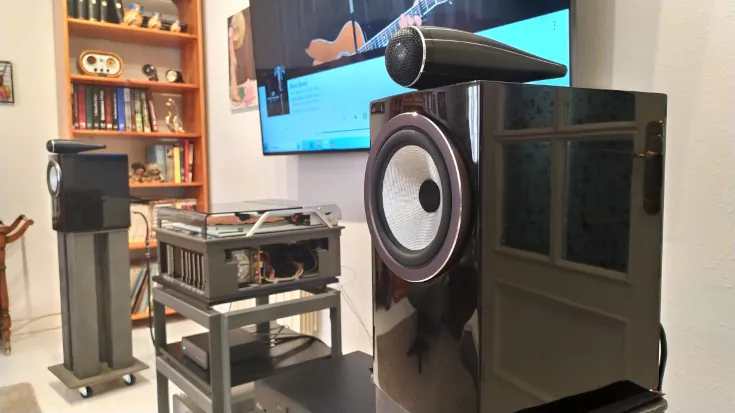
The formula for success in the world of sound is to be predictable in the result and never fail.
-

